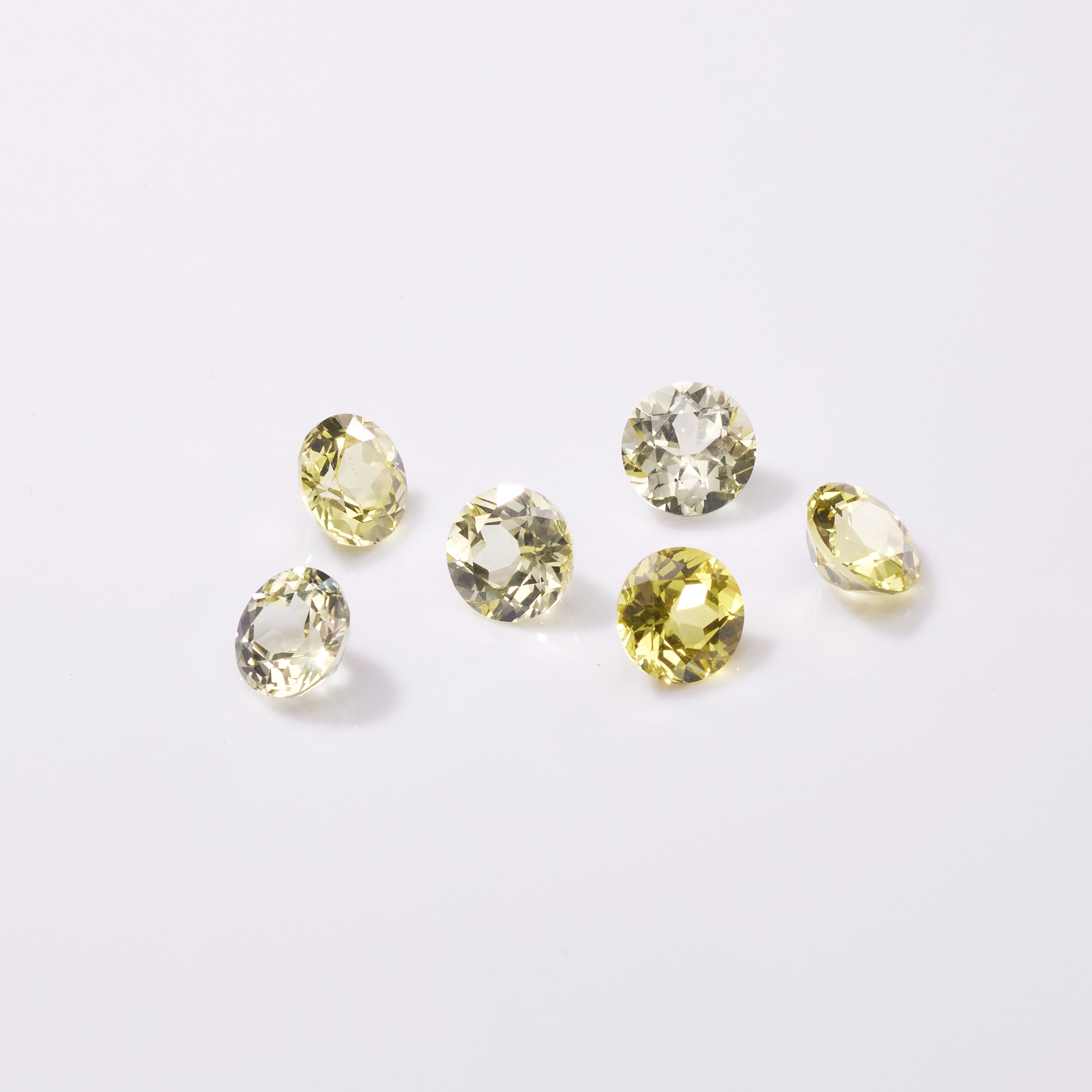UNDERSTANDING THE TERMINOLOGY: NATURAL, LAB-GROWN, AND SIMULANT GEMSTONES
Before comparing gemstones, it is essential for brands to understand the terminology. Natural gemstones are formed within the Earth over millions of years without human intervention, developing unique inclusions, zoning, and trace elements shaped by geological conditions. Lab-grown or synthetic gemstones, on the other hand, are chemically and structurally identical to their natural counterparts but are created in laboratories under controlled conditions that replicate geological processes, such as Hydrothermal, Flux, or Czochralski methods. Unlike lab-grown gemstones, simulants are imitation materials like glass, cubic zirconia, or spinel, designed to visually resemble real gems but differing in chemical and physical properties. When we speak of lab-grown gemstones, we are referring to authentic gems cultivated in laboratories, not imitations.
FORMATION PROCESS AND TIMEFRAME
Natural gemstones require millions of years to form under extreme pressures and temperatures within the Earth’s crust. Their appearance and composition are influenced by the surrounding minerals and environmental conditions, which result in natural variations and inclusions unique to each stone. Lab-grown gemstones, however, are produced in weeks or months using advanced techniques that simulate these natural conditions. Methods such as Hydrothermal, Flux, and Czochralski allow precise control over crystal growth, color consistency, and trace elements, producing high-quality stones with fewer imperfections and more uniform hues. This control gives brands the ability to deliver consistent product quality for large-scale designs.
CHEMICAL, PHYSICAL, AND OPTICAL PROPERTIES
Lab-grown gemstones share the same chemical composition, crystal structure, hardness, and optical properties as natural gemstones of the same species, whether sapphire, ruby, or emerald. The main differences are subtle and lie primarily in inclusions and color uniformity; lab-grown stones typically display fewer inclusions and more consistent coloring. Minor indicators such as growth lines, metallic traces, or microscopic features may reveal their laboratory origin, but these do not compromise the gem’s performance or beauty. For jewelry brands, this means lab-grown gemstones offer predictable, high-quality materials suitable for precise design requirements.
ENVIRONMENTAL AND SOCIAL CONSIDERATIONS
One of the most compelling advantages of lab-grown gemstones is their sustainable and ethical production. Traditional mining disrupts landscapes, consumes large amounts of water, and can release harmful chemicals, while often raising social concerns around labor practices and community displacement. Lab-grown production minimizes land disturbance, allows controlled water recycling, and can achieve dramatically lower carbon footprints, particularly when renewable energy is used. Studies indicate that using clean energy can reduce emissions to as low as 0.028 g CO₂e per unit in some cases. While lab-grown gemstones are not impact-free, careful factory design, energy sourcing, and waste management make them a far more responsible choice for modern jewelry brands.
COST, VALUE, AND SUPPLY RELIABILITY
Lab-grown gemstones provide brands with consistent quality and predictable supply, avoiding the geographical and political constraints of natural mining. Production costs are generally lower due to reduced labor, logistics, and mining expenses, and retail prices are typically 30–80% below those of natural stones, depending on type, color, and clarity. However, resale value may not match that of natural gemstones, particularly for collectors or traditional markets. For brands, lab-grown gemstones offer the advantage of stable supply chains and cost-effective solutions without compromising design possibilities.
CONSUMER PERCEPTION AND MARKETING STRATEGY
Transparency is critical when marketing lab-grown gemstones. Brands should clearly communicate a gem’s origin, production method, and certification while highlighting traceability. Some consumers still associate natural stones with authenticity and rarity, but growing awareness of sustainability, affordability, and ethical sourcing is shifting purchasing behavior. Educational initiatives and third-party certifications help build trust and empower customers to make informed decisions. We emphasizing these benefits strengthens brand credibility and positions lab-grown gemstones as a modern, responsible alternative.
STRATEGIC CONSIDERATIONS FOR JEWELRY BRANDS
When deciding between lab-grown and natural gemstones, brands must consider collection purpose, production scale, and brand values. Lab-grown stones suit projects requiring large, matching designs, precise color coordination, and sustainable messaging. Natural gemstones retain their value in high-end, luxury, or symbolic designs. Brands should also evaluate quality control, certification requirements, budget, and resale expectations. The most forward-thinking brands provide both options and guide customers transparently, combining luxury with sustainability.
CONCLUSION
Lab-grown gemstones represent a compelling, high-potential option for contemporary jewelry brands, offering consistency, cost efficiency, sustainability, and design flexibility. Natural gemstones continue to deliver unmatched rarity and emotional value. By offering both lab-grown and natural options, and educating customers on their differences, brands can empower buyers to make choices aligned with their values and budgets, establishing trust and leadership in the B2B gemstone market.
.avif)
